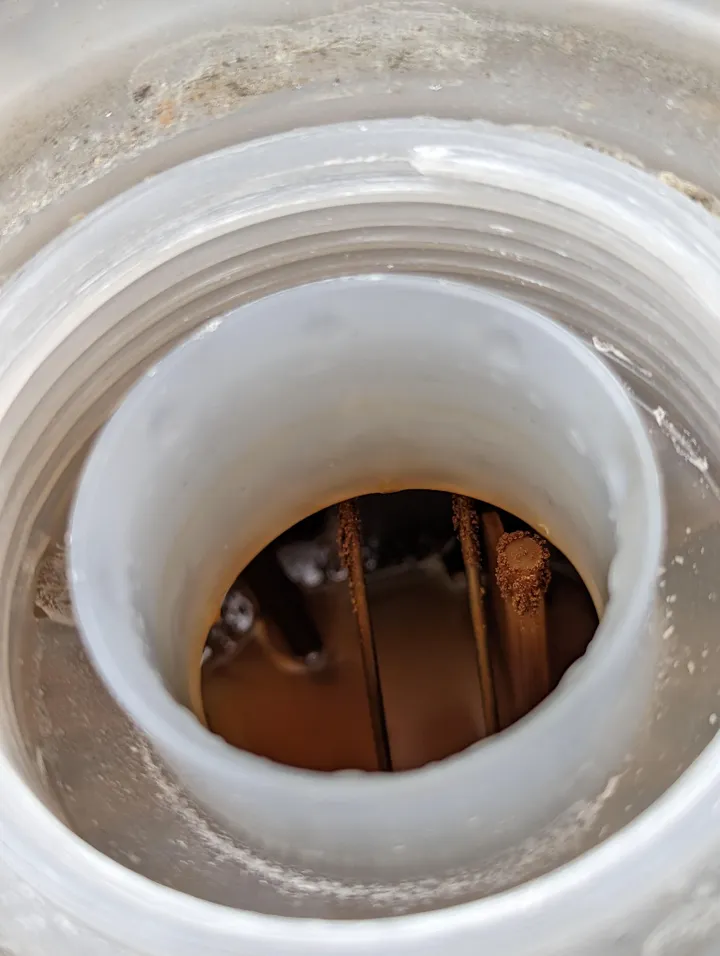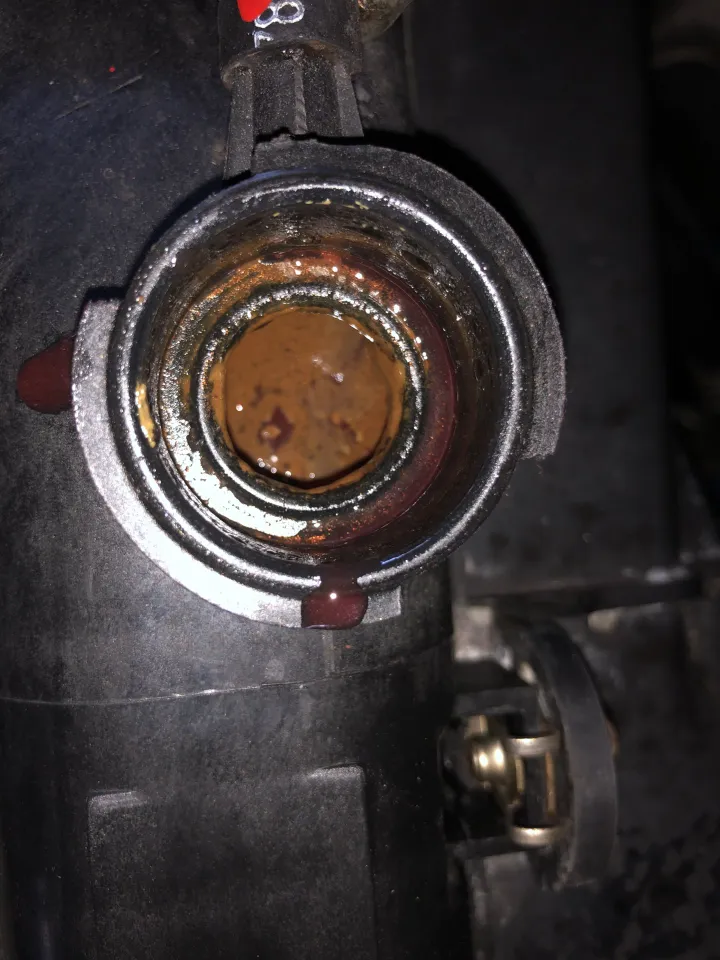


Maintaining a properly functioning cooling system is crucial for the longevity and performance of your vehicle's engine. The coolant, also known as antifreeze, plays a vital role in regulating the engine's temperature by circulating through the engine block, absorbing heat, and transferring it to the radiator, where it is dissipated. When the coolant becomes discolored or turns brown, it's a clear indication that something is amiss, and prompt action is required to prevent potential engine damage.
In this article, we'll delve into the five primary causes of brown or discolored coolant, including rust contamination, oil leaks, coolant breakdown, mixing incompatible coolants, and transmission fluid leaks. We'll also provide practical solutions and preventative measures to address these issues and maintain a healthy cooling system.

One of the most common causes of brown or discolored coolant is rust contamination. Over time, the coolant can cause corrosion and rust buildup inside the radiator and engine cooling passages. This rust can mix with the coolant, turning it a brownish color.
The presence of rust particles in the coolant is a clear sign that the cooling system components are aging and may need to be replaced. Rust contamination is especially common in older vehicles with aging cooling systems. If left unchecked, the rust particles can circulate through the system, potentially causing blockages and restricting coolant flow, leading to overheating and further damage.
To identify rust contamination, look for the following signs:
A reddish-brown tint to the coolant
The presence of sediment or particles in the coolant
Preventative measures include:
Regular coolant flushes
Using coolant with corrosion inhibitors, which can help slow the corrosion process

Another common cause of brown or discolored coolant is an internal oil leak, such as a blown head gasket or a cracked engine block. In these cases, engine oil can leak into the cooling system, mixing with the coolant and causing it to take on a brownish, milky appearance.
Oil contamination in the coolant can have severe consequences for the cooling system and the engine. Not only can it reduce the coolant's ability to effectively transfer heat, but it can also lead to the formation of sludge and deposits, further restricting coolant flow and potentially causing overheating.
Signs of oil contamination in the coolant include:
A milky or opaque appearance
An oily residue or smell
If an oil leak is suspected, it's crucial to have the issue diagnosed and repaired promptly. This may involve:
Replacing failed gaskets or seals
Monitoring both the oil and coolant levels to ensure they remain at the proper levels
Over time, the coolant itself can break down and degrade chemically, leading to the formation of sludge and sediment in the cooling system. This breakdown can occur due to several factors, including:
The depletion of additives
The buildup of acidic compounds
As the coolant breaks down, it loses its ability to effectively transfer heat and protect against corrosion. The sludge and sediment formed can restrict coolant flow, leading to overheating and potentially causing damage to the engine and other cooling system components.
To prevent coolant breakdown, it's essential to follow the manufacturer's recommended coolant replacement intervals and use compatible coolant types. Mixing different types of coolant can accelerate the breakdown process and lead to further contamination.
Speaking of mixing coolants, this is another common cause of brown or discolored coolant. Different types of coolant contain different additive packages, and when these incompatible coolants are mixed, a chemical reaction can occur, leading to the formation of precipitates and sludge.
This reaction can not only discolor the coolant but also compromise its ability to protect against corrosion and effectively transfer heat. In some cases, the mixture can even cause gelling or solidification, completely blocking coolant flow and leading to catastrophic overheating.
To identify if incompatible coolants have been mixed, look for:
Discoloration
Cloudiness
The presence of deposits or gelling in the coolant
It's crucial to consult your vehicle's owner's manual and use only the approved coolant types specified by the manufacturer. If in doubt, it's always best to consult a professional mechanic.
In some vehicles, the transmission cooler is integrated into the radiator, allowing the transmission fluid to circulate through the radiator and dissipate heat. While this design is efficient, it also creates the potential for transmission fluid to leak into the cooling system and mix with the coolant.
When transmission fluid mixes with the coolant, it can cause the coolant to take on a brown or reddish hue. Additionally, you may notice that the transmission fluid level is dropping, indicating a leak.
If a transmission fluid leak is suspected, it's essential to have the issue diagnosed and repaired promptly. This may involve:
Replacing faulty transmission cooler lines
Replacing the cooler itself
Regular fluid level checks and cooling system inspections can help catch these leaks early, preventing further contamination and potential damage.
Regardless of the cause of the brown or discolored coolant, it's crucial to identify and address the root issue promptly. This process typically involves a thorough inspection of the cooling system, including pressure testing to identify any leaks or areas of concern.
Once the source of the contamination has been identified, the next step is to perform a complete cooling system flush and refill. This process involves:
Draining the old, contaminated coolant
Refilling the system with fresh, compatible coolant
In addition to the flush and refill, any worn or failed components, such as the radiator, hoses, water pump, thermostat, gaskets, seals, or cooler lines, should be replaced to ensure the integrity of the cooling system and prevent future issues.
Table 1: Common Cooling System Components to Inspect and Replace
| Component | Function | Potential Issues |
|---|---|---|
| Radiator | Dissipates heat from the coolant | Leaks, clogs, corrosion |
| Hoses | Carry coolant to and from the radiator | Cracks, leaks, deterioration |
| Water Pump | Circulates coolant through the system | Leaks, bearing failure, impeller damage |
| Thermostat | Regulates coolant flow and temperature | Stuck open or closed, causing overheating or overcooling |
| Gaskets and Seals | Prevent coolant and oil leaks | Failure can lead to fluid mixing and contamination |
| Cooler Lines | Connect the transmission cooler to the radiator | Leaks can allow transmission fluid to mix with coolant |
While addressing the immediate issue of brown or discolored coolant is crucial, it's equally important to implement preventative maintenance measures to ensure the long-term health of your cooling system. This includes:
Following the recommended service intervals for coolant flushes and changes, as well as cooling system inspections.
Using the correct coolant type and mixture specified by the manufacturer, and avoiding mixing incompatible coolants.
Regularly monitoring the coolant level and condition, as well as inspecting for signs of leaks or overheating.
By staying proactive with your cooling system maintenance, you can catch potential issues early and prevent more significant problems from developing.
Table 2: Recommended Coolant Maintenance Schedule
| Maintenance Task | Frequency |
|---|---|
| Coolant Flush and Refill | Every 30,000 - 60,000 miles or as recommended by the manufacturer |
| Cooling System Inspection | Annually or as recommended by the manufacturer |
| Coolant Level Check | Monthly or before long trips |
| Leak Inspection | During routine maintenance or when coolant level drops |
| Hose and Belt Inspection | Annually or as recommended by the manufacturer |
Here's a list of common signs that your cooling system may need attention:
Low coolant level
Coolant leaks
Overheating engine
White exhaust smoke
Coolant discoloration or contamination
Abnormal noises from the cooling system
Discolored or brown coolant is a clear warning sign that should not be ignored. By understanding the five primary causes outlined in this article – rust contamination, oil leaks, coolant breakdown, mixing incompatible coolants, and transmission fluid leaks – you can take the necessary steps to address the issue and maintain a healthy cooling system.
Remember, addressing the root cause and performing a complete cooling system flush and refill is crucial to prevent further damage and ensure your vehicle's engine operates at optimal temperatures. Additionally, implementing preventative maintenance measures, such as regular coolant changes and inspections, can go a long way in prolonging the life of your cooling system and avoiding costly repairs down the line.
If you're unsure about the cause of your discolored coolant or the necessary steps to take, it's always best to consult a professional mechanic. They have the expertise and tools to diagnose and address the issue properly, ensuring the longevity and reliability of your vehicle's cooling system.
Coolant can turn brown due to rust contamination from corrosion inside the cooling system or by mixing with engine oil from an internal leak.
Signs of contaminated coolant include a brownish or milky appearance, presence of particles or sediment, and a sweet or oily smell.
It is generally not recommended to mix different types of coolant as they can react and form a gel-like substance that clogs the cooling system.
Mixing green (inorganic additive technology) and orange (organic acid technology) coolant can cause a chemical reaction that leads to sludge formation and potential cooling system failure.
Most manufacturers recommend flushing and replacing the coolant every 30,000 to 60,000 miles or every 2-5 years, depending on the coolant type and vehicle.
Yes, a coolant leak can lead to overheating and potentially severe engine damage if not addressed promptly.
Common signs of a coolant leak include coolant puddles under the vehicle, a sweet odor, steam from the engine bay, and the temperature gauge reading higher than normal.
It is not recommended to drive with a coolant leak, as it can quickly lead to overheating and engine damage. It's best to have the leak repaired as soon as possible.
The cost of fixing a coolant leak can vary depending on the cause, but it can range from a few hundred dollars for a hose or gasket replacement to several thousand dollars for a head gasket or engine repair.
If you accidentally mix incompatible coolants, it's crucial to flush the entire cooling system and replace the coolant with the recommended type to prevent potential damage.

Miguel started tinkering with car radios as a teenager, fascinated by the intricate dance of wires and circuits. This passion led him to pursue a career as an automotive electrician. For the past 10 years, Miguel has tackled everything from flickering headlights to mysterious electrical gremlins. He thrives on troubleshooting electrical problems and enjoys sharing his knowledge to empower car owners to understand their vehicles better.








